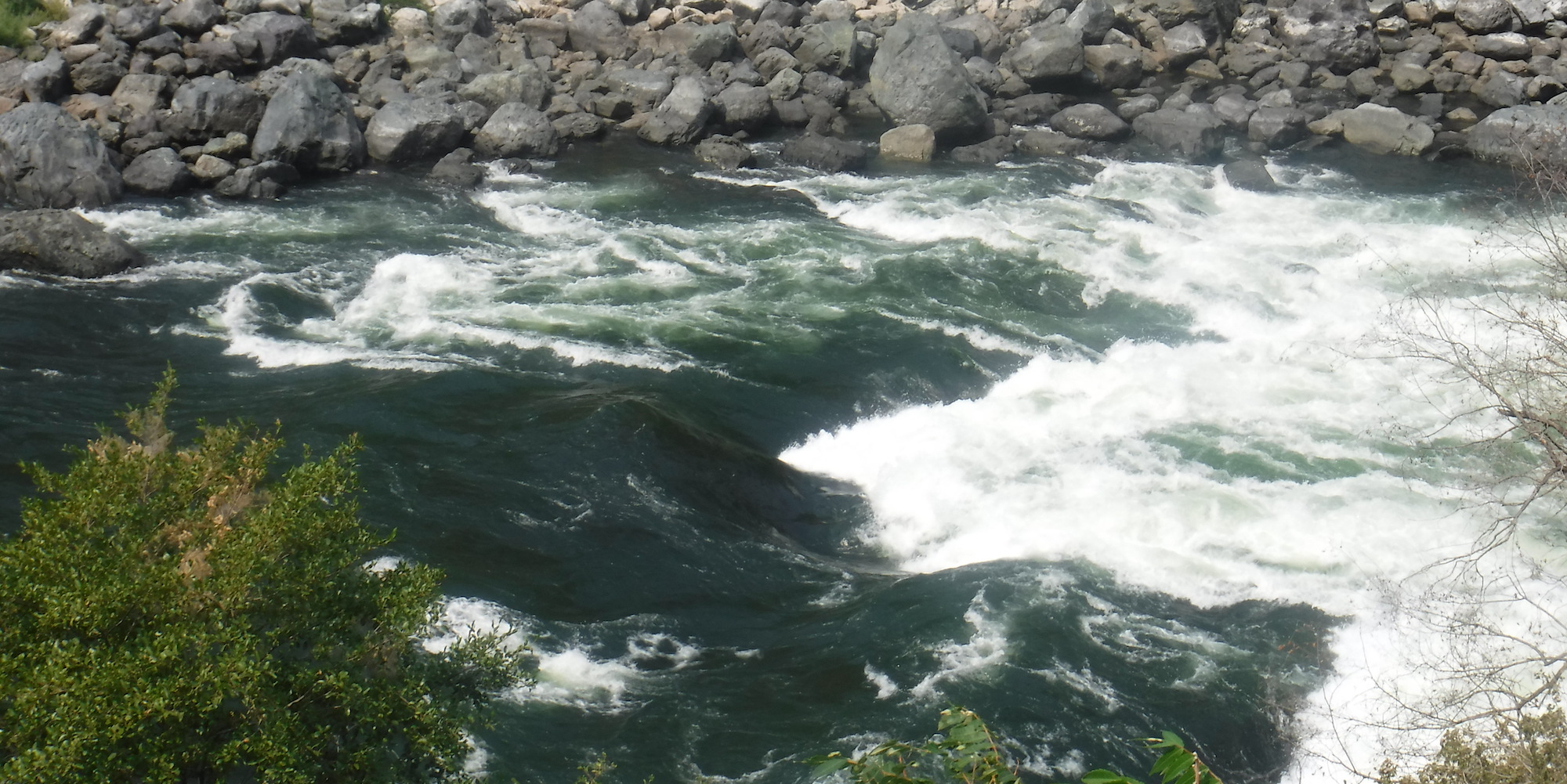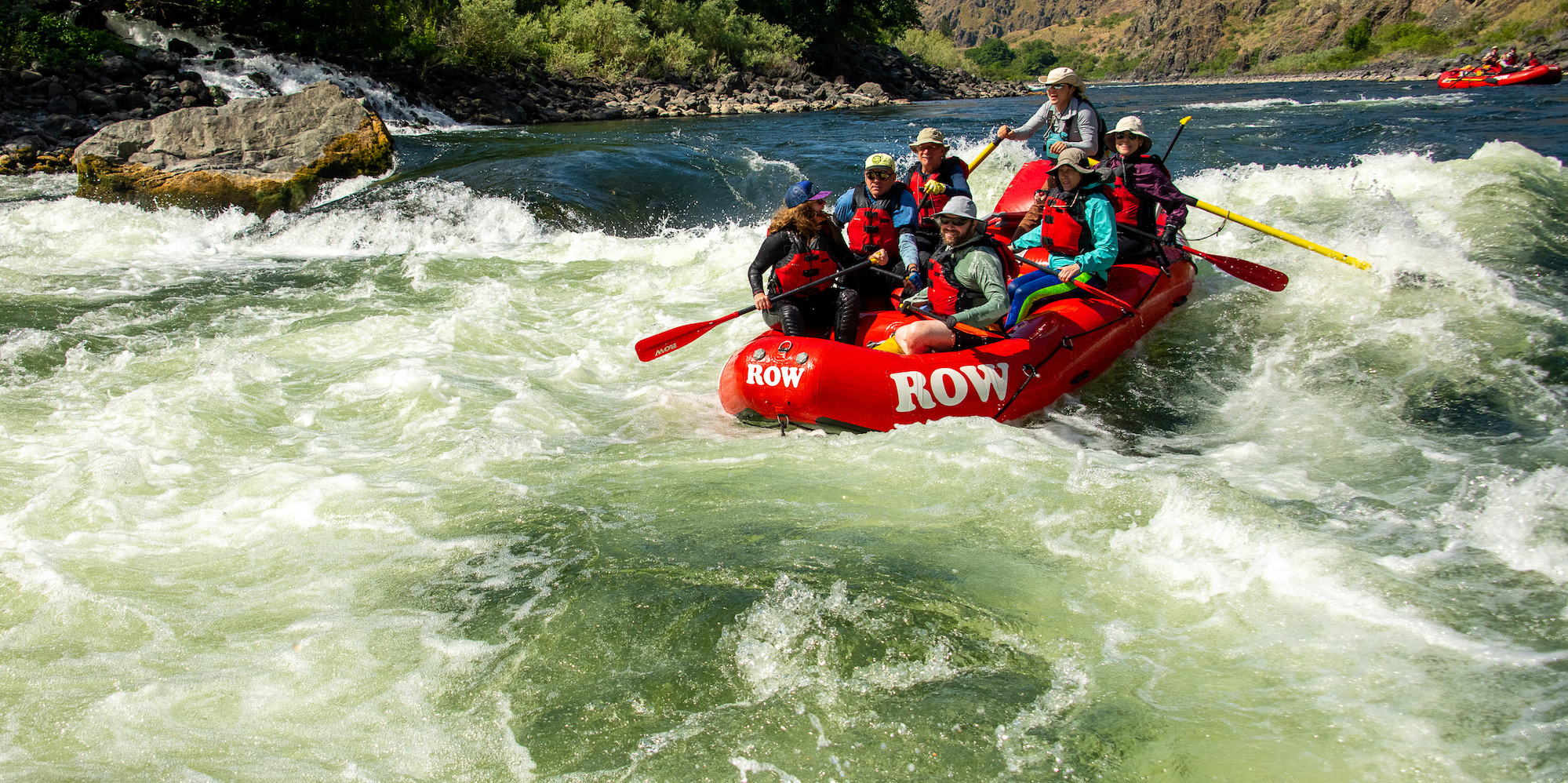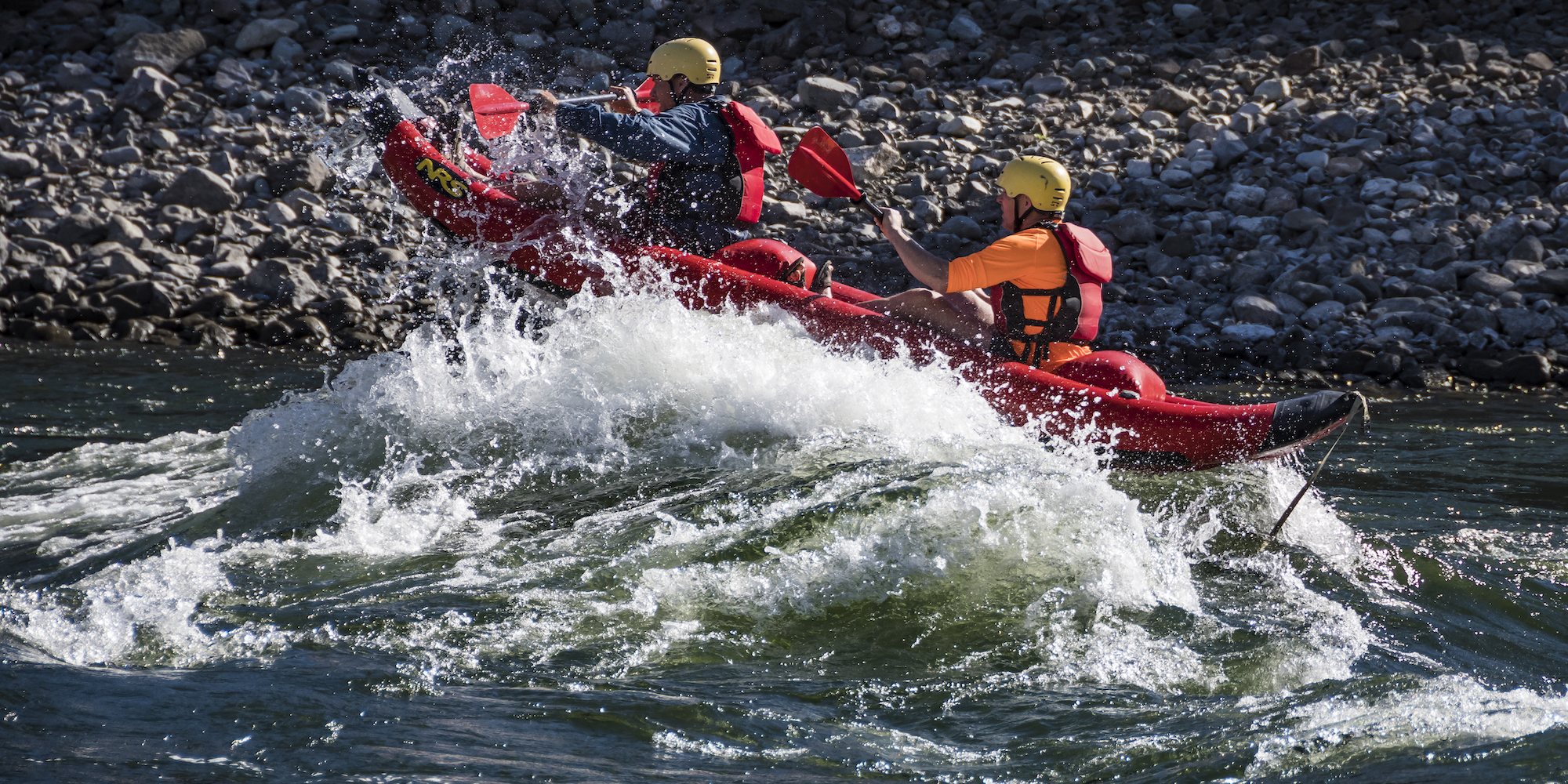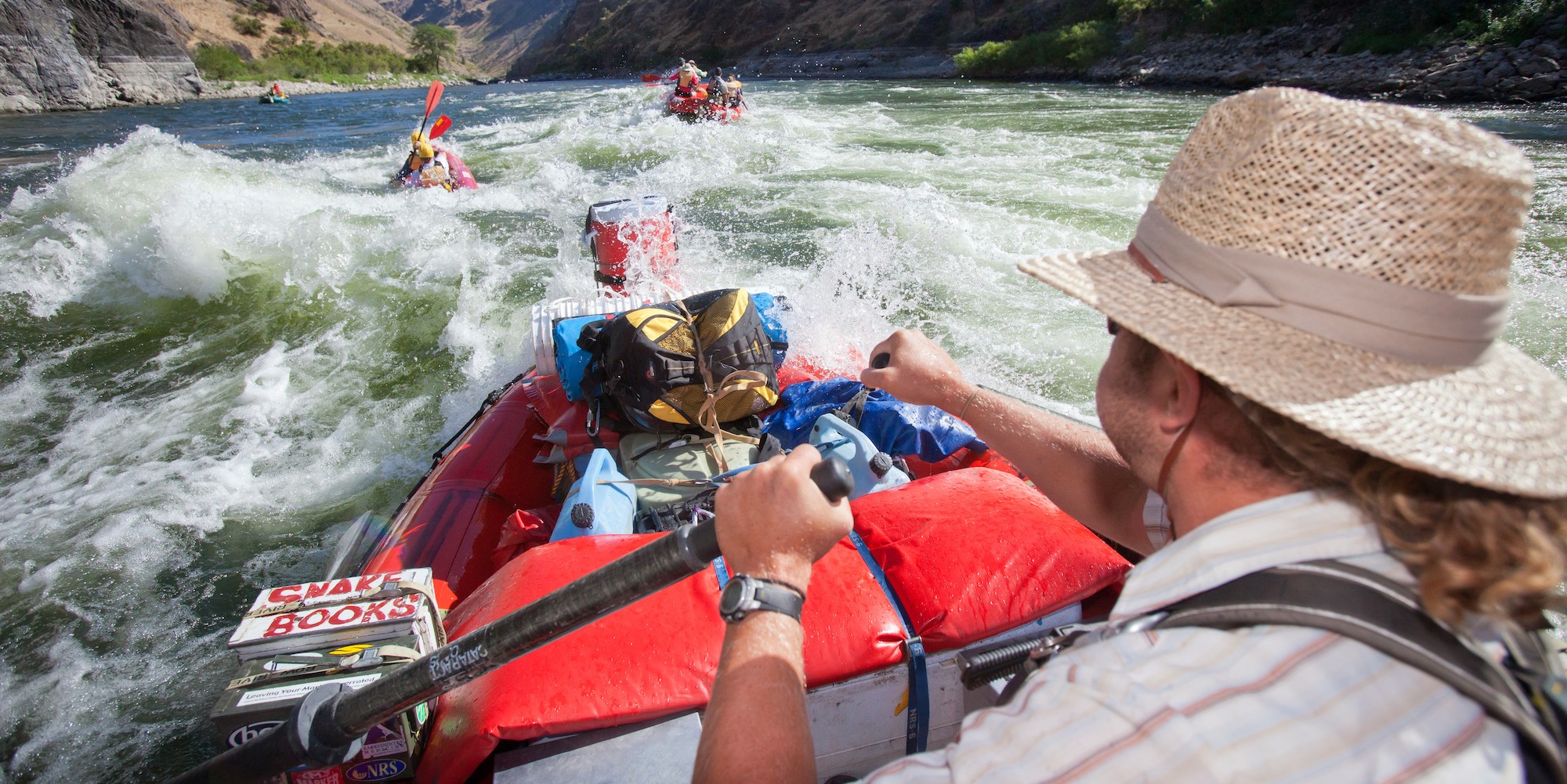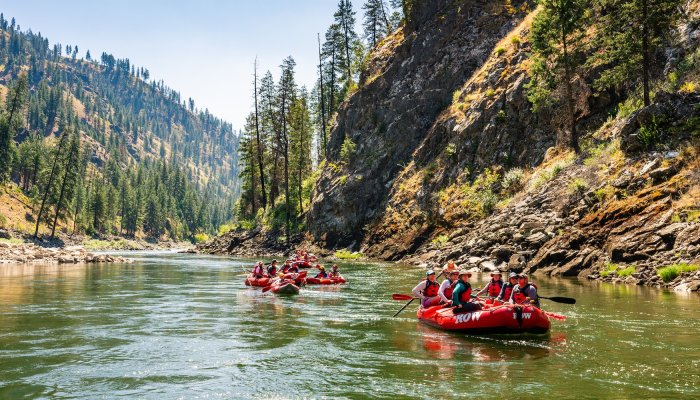What Class Rapids are on the Snake River through Hells Canyon
If you have a Snake River Rafting trip through Hells Canyon coming up, you are probably wondering what class rapids you might encounter. Let's start by delving into the whitewater rapid classification system, a standard used on most rivers worldwide, ranging from class I to class VI, and almost exclusively referred to in Roman numerals. The classification of a rapid is subjective, typically agreed upon by boaters familiar with a particular section of river. It should be noted that rapid ratings can change based on water level. Generally speaking, class I represents calm, flat water, while class VI denotes rapids deemed unrunnable because of posing extreme risk. The majority of rivers and rapids attracting boaters will fall within the class II-lV range. Class V rapids are very risky and in the U.S. at least, few rafting outfitters offer trips that include class V rapids, or on rivers with only one or two class V rapids, they may offer trips but choose to portage around class V rapids if that is possible.
What is important to understand is that the size of waves is only one factor in the rating system and it is the technical difficulty of successfully navigating the rapids that is more important. In other words, a class II rapid, which generally does not require a high level of skill to navigate, could have large waves that provide a super-fun ride. Conversely, a class IV rapid chock-full of rocks and other obstacles, if navigated well by a skilled guide, could seem rather anti-climactic.
During a ROW Adventures trip on the Snake River through Hells Canyon, guests can expect encounters primarily with class II and III rapids, with an occasional class IV rapid. The Snake River is a "pool and drop"; river. This means that between the rapids are “pools” of flat water that can range from 100 yards to a half a mile in length. For further understanding of rapid classification, explore our whitewater classification guide.
To help break down significant rapids on this stretch of river, we’ll start by laying the foundation of a 5-day trip through Hells Canyon, giving you some context on the river, and what you can expect on a trip through the deepest river gorge in North America.
Snake River through Hells Canyon Map and Rapid Overview
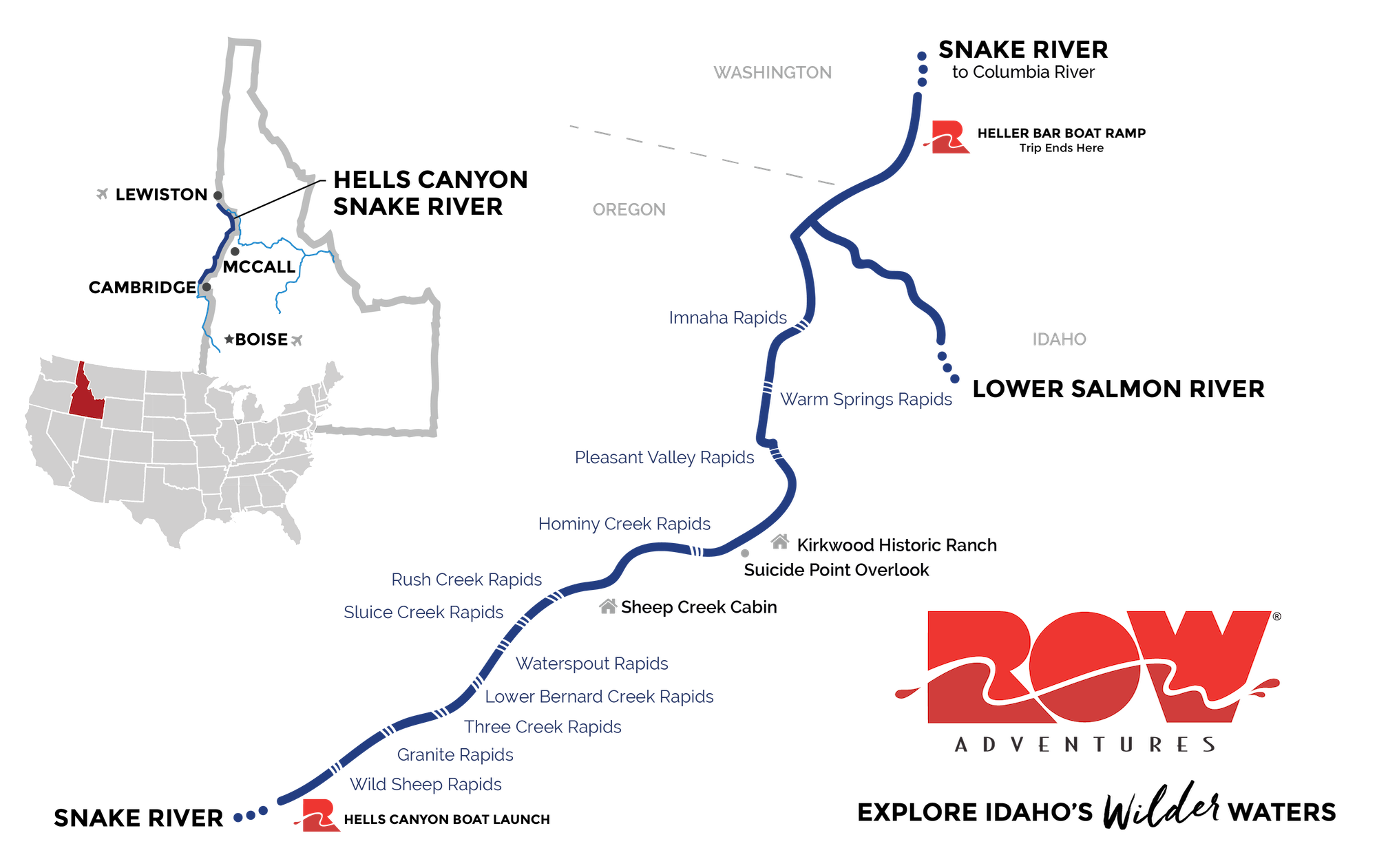
Snake River through Hells Canyon quick facts:
- Best Rafting Season: May-October offers the best weather and water temperatures. Because the Snake River is dammed, the Hells Canyon section can be rafted nearly all year long.
- Location: The Snake River through Hells Canyon defines much of the border between Oregon and Idaho, and some of the border between Idaho and Washington.
- River Flow: The Snake River runs generally south to north and feeds into the Columbia River.
- Tributaries: From the Snake River’s mouth in Wyoming to the confluence with the Columbia River, the Snake has 54 tributaries. In total its waters flow through six states – Wyoming, Montana, Nevada, Idaho, Oregon and Washington.
- River Mileage: From the Hells Canyon Dam put-in to the Heller Bar take-out is 80 river miles. Floating from the Hells Canyon Dam to the alternate takeout at Pittsburg landing is 33 river miles.
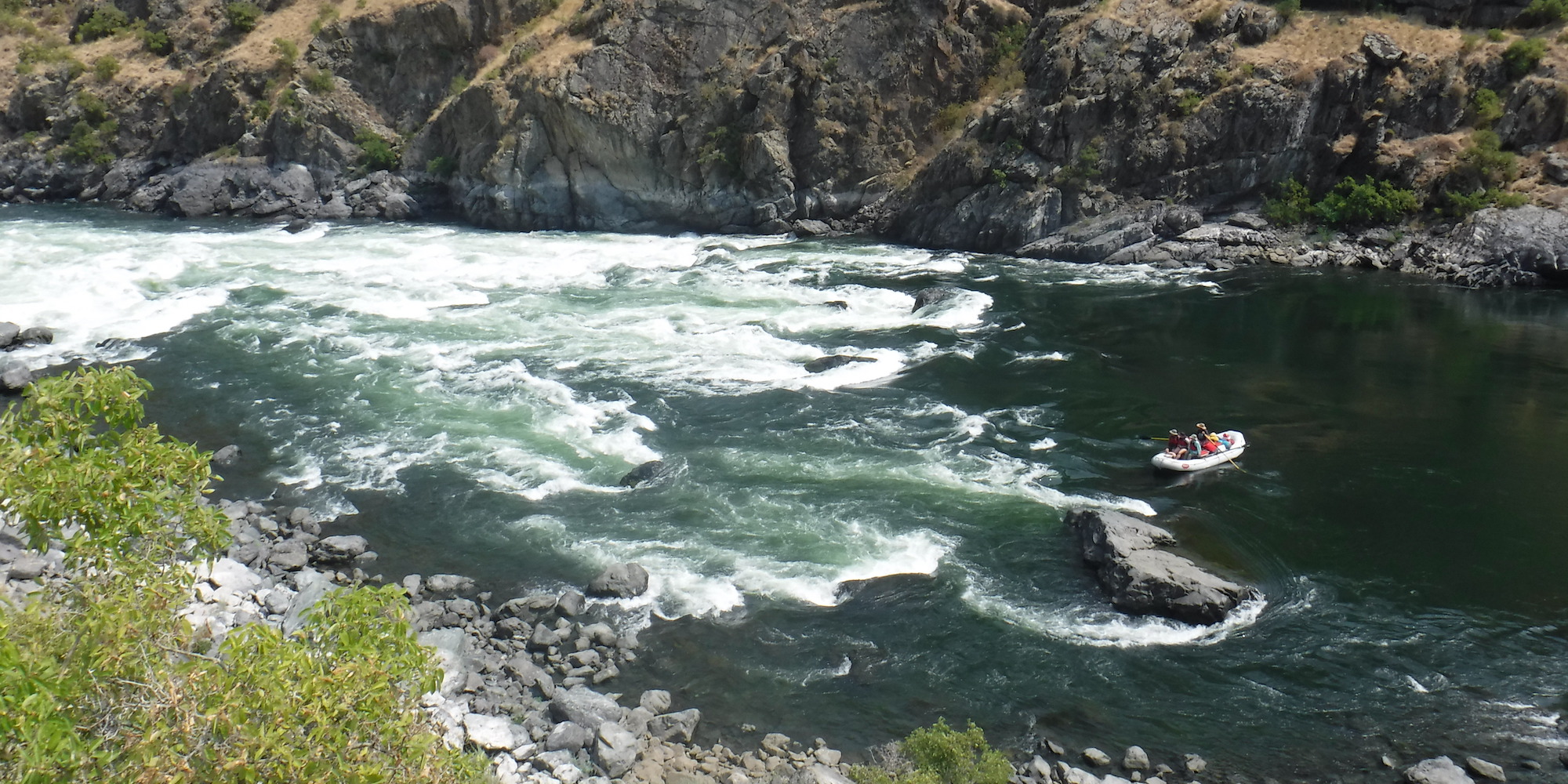
Wild Sheep Rapids - Class IV
Launching from Hells Canyon Dam, the first six miles of the river include some fun class II rapids. Then you arrive at Wild Sheep Rapids. Coming in as a class IV rapid at nearly all flows, Wild Sheep is a real thriller, with big waves and holes (hydraulic features created by rocks and water) that are best avoided.
Wild Sheep is best scouted from river left, and a highlight of a ROW trip is stopping to look at the rapid. Because the water levels on the Snake are dam controlled, big rapids like Wild Sheep can look very different day to day. Rafters talk about the “line” they will take through the rapid, which means the path of the boat, and with changing water levels, lines change as well. At most flows, the run is to enter river left and pull hard to get to the center. T-up to the big breaking laterals coming off the left towards the bottom. At high water there is also a river right run through powerful waves and hydraulics.
Granite Rapids - Class IV
Up next in the rapid rotation you come to Granite rapids. This Class IV rapid earns its name from Granite Creek that enters on river right, flowing from the impressive Seven Devils mountains.
As you approach Granite Rapids, you’re met with a striking landscape of sheer cliffs and rugged terrain, setting the stage for an adrenaline-pumping run through another iconic rapid of Hells Canyon. The river narrows, funneling into a series of powerful waves and complex hydraulics, demanding precise maneuvering and unwavering focus from guides.
At certain water levels, you may hear talk of the Green Room being open. The Green Room is a special line through Granite rapids that only exists at specific water levels. The Green Room is a favorite novelty among guides when its present. Granite Rapids is renowned for its technical nature, with narrow chutes and turbulent currents testing the skills of even the most experienced paddlers. As rafts and kayaks navigate the rapids, they're met with exhilarating drops and explosive waves, creating an unforgettable ride amidst the stunning natural beauty of Hells Canyon.
Three Creek Rapids - Class II/III
Three Creek rapids is a fun series of rapids known to guides and frequent river goers as a “read and run.” This means the rapid is easily navigable by looking downstream and identifying obstacles, challenges, and necessary maneuvers all from the raft.
Bernard Creek Rapids - Class II-IV
Upper Bernard rapid is a wave train with punchy waves providing an even bigger and wetter ride than its sister rapid downstream!
Lower Bernard is a fun wave train that often provides more splashes than you might think! This is a rather short rapid with a clear route down the middle of it. This is a great rapid to sit toward the front of the boat to cool you down on those hot summer days.
Waterspout Rapids - Class IV
Shortly downstream you will sneak up on another iconic rapid in Hells Canyon, Waterspout. Not as famous as Wild Sheep and Granite, this rapid nevertheless is very challenging. Angled waves and sometimes hidden rocks require precise maneuvering. Higher water levels tend to wash out this rapid, creating a much calmer experience through the rapid. Your guide will likely take your boat just to the right of all the action, allowing for fun waves, splashes, and views of huge waves to get your adrenaline pumping!
Sluice Creek Rapids - Class II/III
Sluice creek rapid is an all-time guest favorite. It’s known for fun roller coaster waves that rafts cruise right over. This rapid is named after the Sluice Creek that tumbles into the river from the Oregon side.
Rush Creek Rapids - Class III/IV
You know you’re coming up on Rush Creek Rapids as a large boulder in the middle of the river indicates the beginning of the rapid. At higher water levels the boulder creates a big drop in the water avoided by entering the river on the right side. At low water this rapid becomes more technical due to navigating various sneaky rocks throughout the rapid.
Imnaha Rapids - Class III
Imnaha rapids is named for the Imnaha river that enters from Oregon, and has some fun waves.
The confluence of the Snake and Salmon is another three miles downstream and its an inspiring place where two large rivers converge. For the next 20 miles before the take-out at Heller Bar there are a number of other rapids. Wild Goose is a super-fun one, with big waves caused as the river is constricted by a large gravel bar. Not far downstream from Wild Goose is Deer Head rapids which deserves great respect at low flows when huge and rather steep waves appear.
The rapids of the Snake River through Hells Canyon offer a thrilling array of challenges for whitewater enthusiasts, from the moderate splashes of Class III rapids to the heart-pounding thrills of Class IV waves. Familiarizing yourself with some of the characteristics of the river and its rapids may add to the richness of your pre-trip experience and bring moments of “Oh, I remember reading about this rapid” when you arrive at the entrance of the churning waters. Whether you remember the rapid names or not, you are sure to forge lifelong memories amidst the wild beauty of Hells Canyon.

